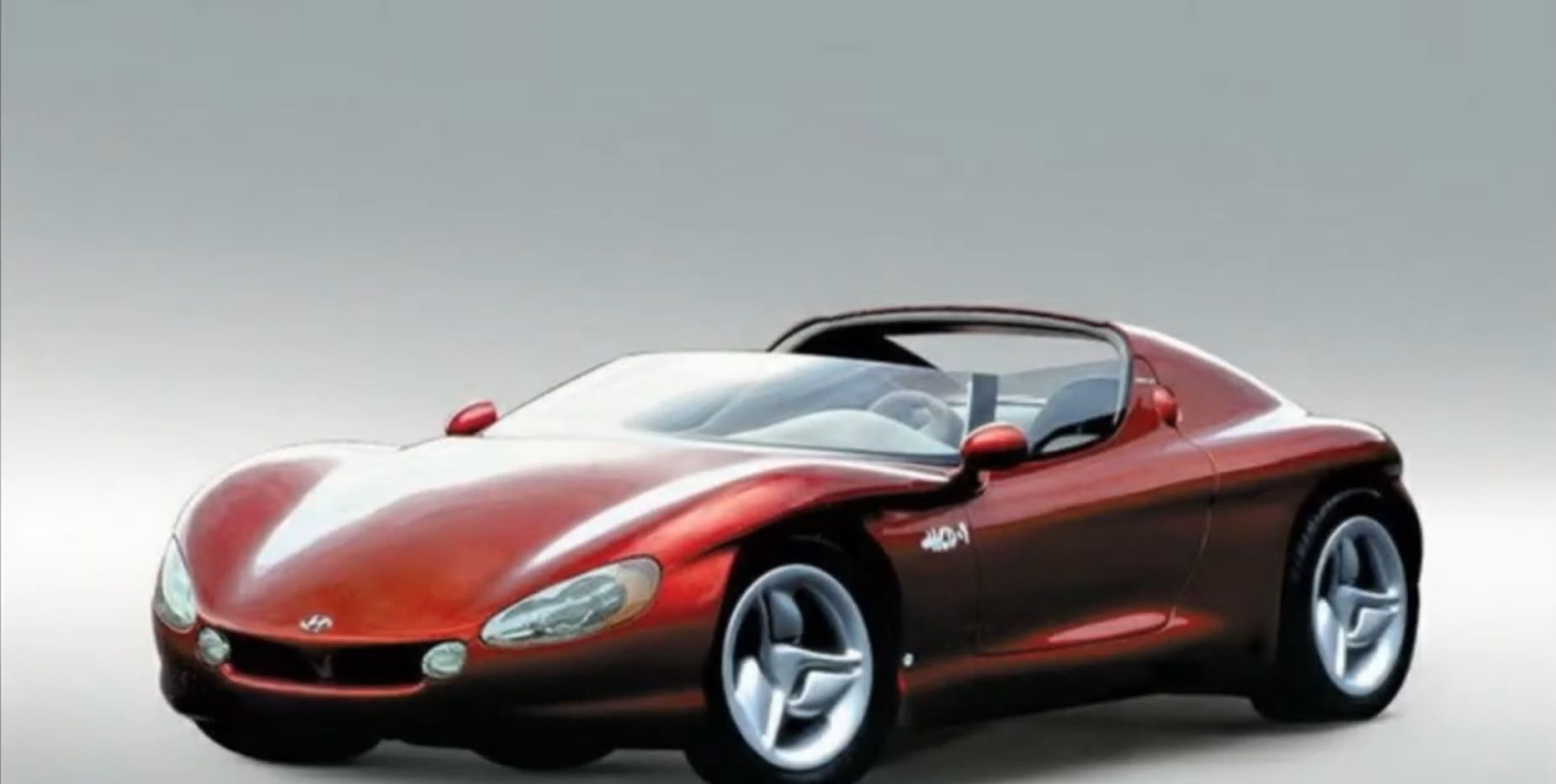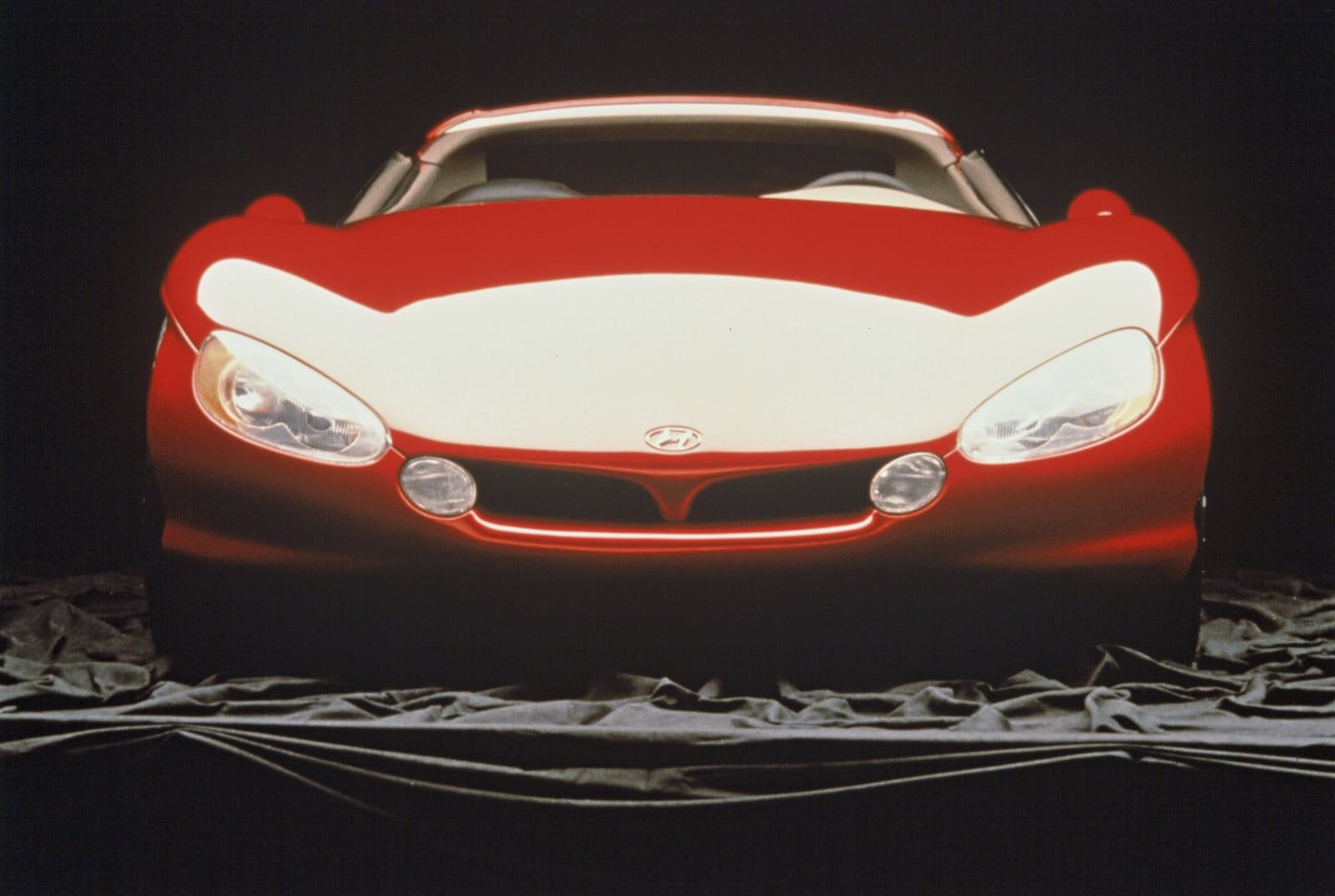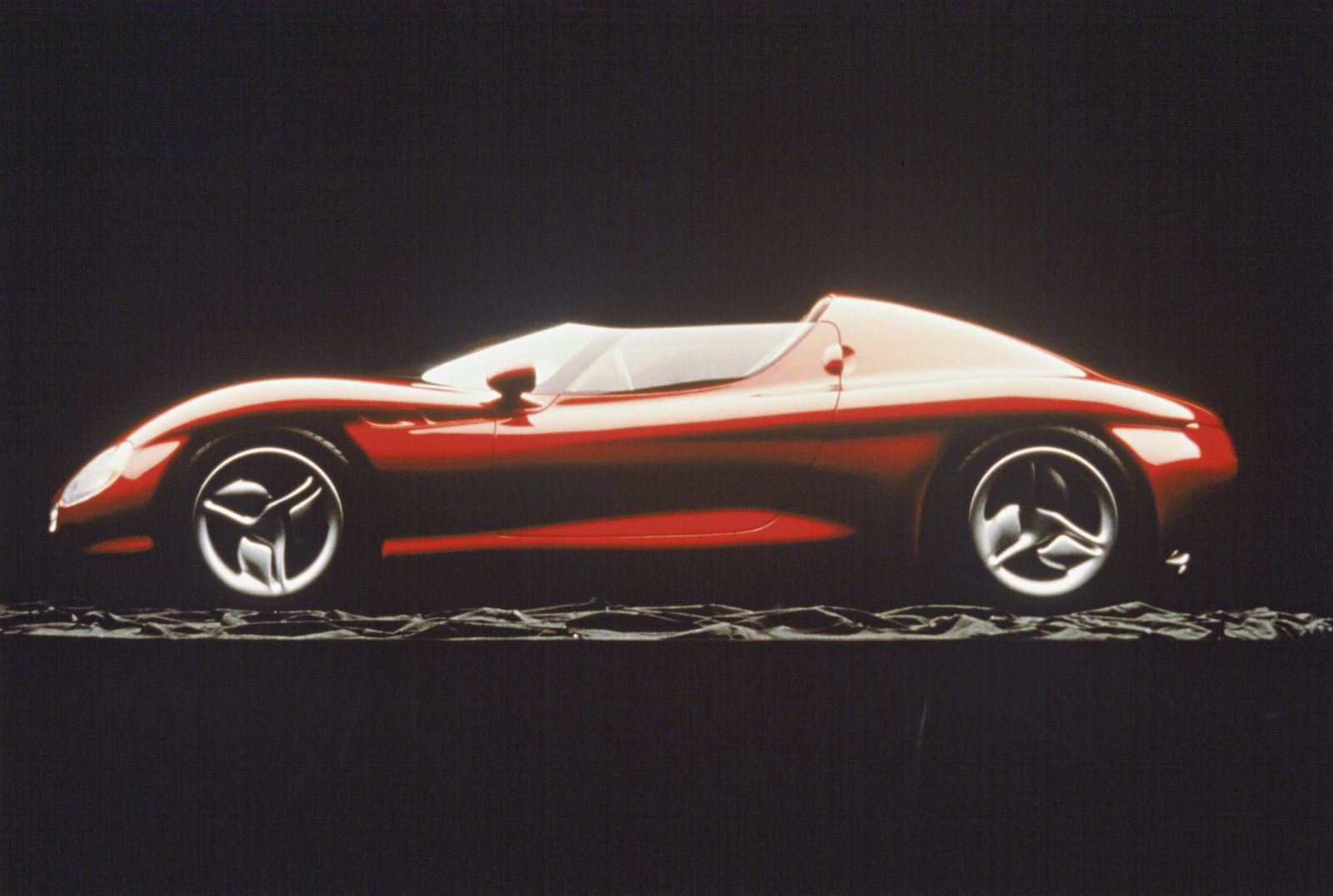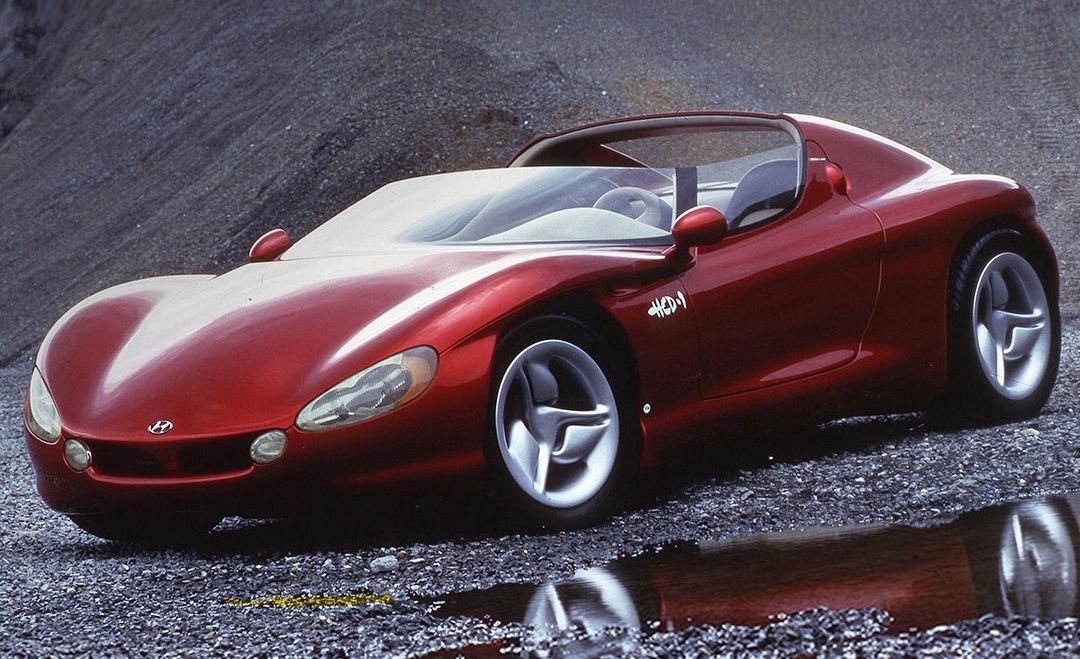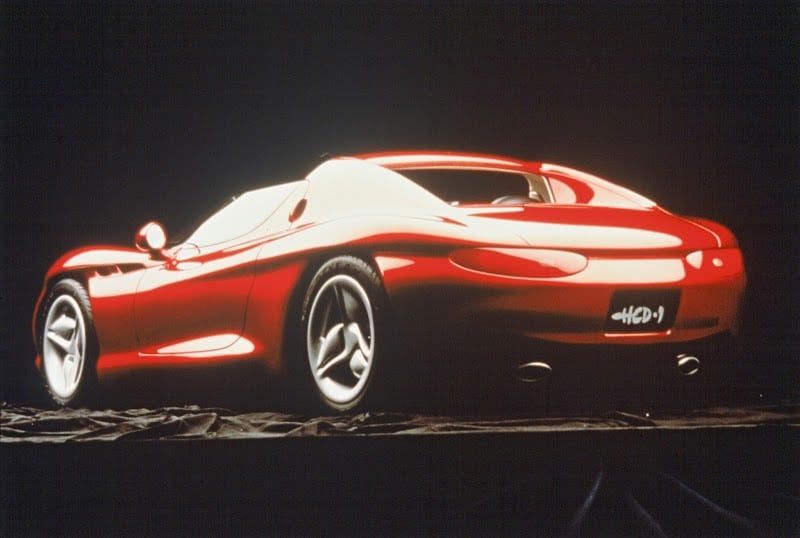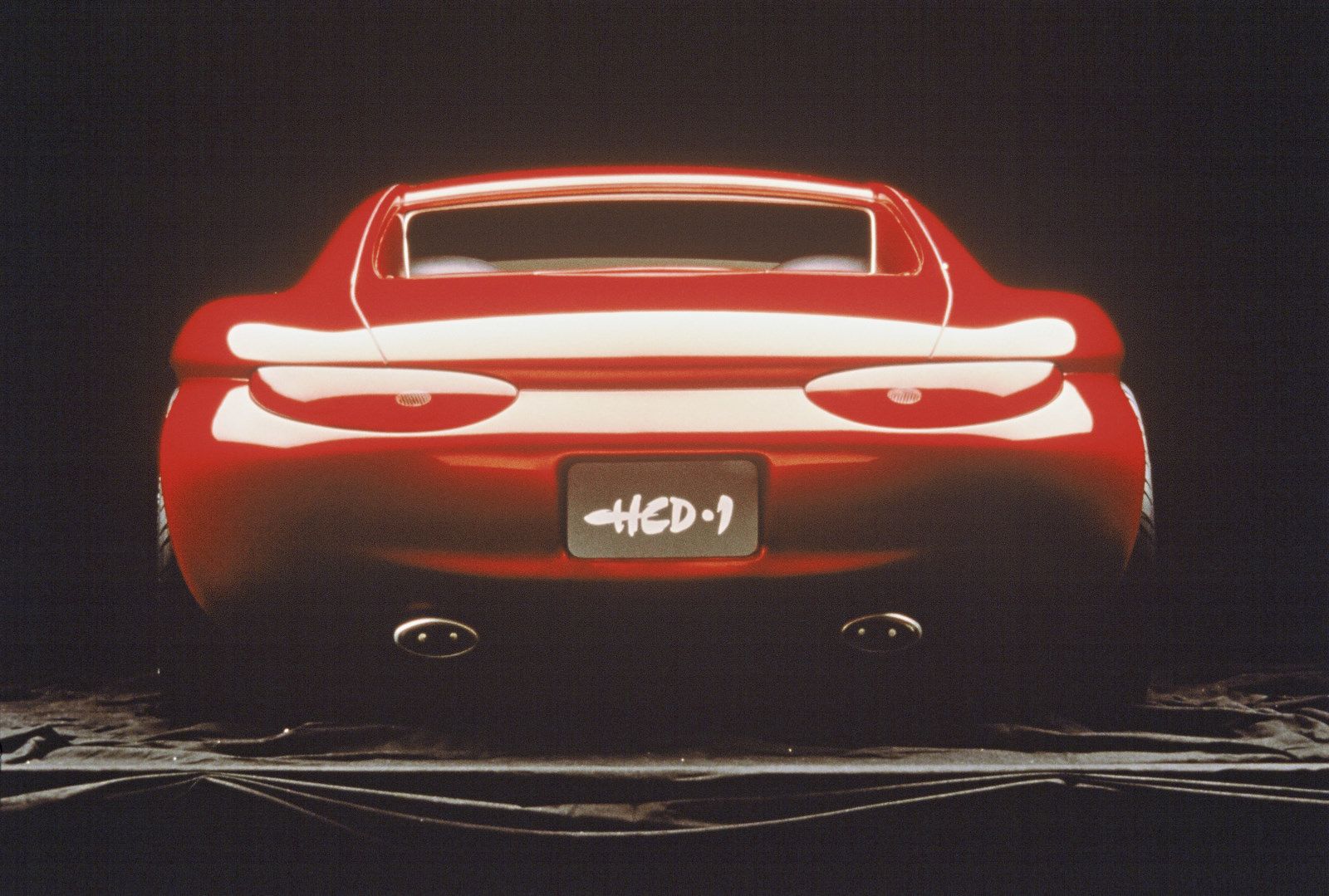108,549 cars. That's how many Hyundai was able to sell Stateside in the year 1992 when it was offering just three cars for sale with the Elantra being the new kid on the block. Something was needed to boost sales and fix the company's dimming public image. That something was a swooping speedster named HCD-1 that stole the headlines at the Detroit Auto Show. It was the breath of fresh air that the Korean maker dearly needed.
Hyundai wanted to be cool two decades before the N division was born
Now amongst the world's most popular brands, Hyundai was relatively unknown when it broke onto the American scene all the way back in 1986 with the compact and inexpensive Excel. As Hyundai's first FWD offering, the generic-looking hatch (a sedan was also offered) proved immensely popular as a record-breaking 168,882 found a home in the model's first year on the market.
But the resounding success of this new foreign automaker wasn't meant to last. Cost-cutting was the name of the game at Hyundai back in those days and the American consumer was initially lured in by the $2,100 MSRP at a time when the average price of a car was almost $10,500. However, buyers soon fled Hyundai dealerships as the Excel's unreliability made headlines around the country.
Take this story from January of 1992 that was published in the LA Times. Apparently, issues found with some parts in the engine bay could cause "exhaust gases to melt the air filter and the smoldering plastic could then cause an engine compartment fire." This would be of serious concern for anybody and it's such problems - that led Hyundai Motor America to recall almost all Excels it sold - that made Hyundai drop to a market share of just 0.8% by '91.
In a bid to make amends, Hyundai tried to appeal to the buyers' hearts by concocting a futuristic, curvy, and, in short, out-of-character concept car. I say out of character because, while Hyundai means 'modernity', there was nothing modern on the floor of any Hyundai dealership Stateside. Apart, maybe, from some PCs or a fax machine.
Referring to its Californian roots, the HCD-1 (which stands for Hyundai California Design 1) looked like it belonged near the ocean, driving down Mullholand Drive. As stated in the concept's official brochure, this was the first Hyundai to be "conceptualized strictly for the North American market."
Featuring a Targa roof and a fully retractable rear window, the HCD-1 abounded in flowing lines with the vent-free hood plunging downwards to meet the rounded headlights and the fog lights that are contained by the air inlets of the front fascia. With strakes cutting through the wheel arches, Hyundai reckoned the HCD-1 was a "departure from most existing sports cars" as it oozed of "an exhilarating emotional appeal." That statement is surely up for debate given that, by 2021 standards, the HCD-1 looks like something out of a GTA game. I mean, really, GTA took those headlights and plastered them on the 'Infernus' in GTA III. It's uncanny!
Away from the buzzard-inspired aesthetics (including 17-inch rims that were "over-sized" according to Hyundai!), the HCD-1 was actually able to move under its own steam. That's because there was actually an engine in this thing. As tacky as it might seem now with that round dashboard, the pedals hiding underneath were actually commanding a 2.0-liter, 16-valve DOHC engine capable of producing 150 horsepower. The provenance of the powerplant is a bit of a mystery since Hyundai's Beta II engine in its 2.0-liter guise only appeared nine years later, in 2001.
In any case, Hyundai made sure to help the HCD-1's passengers remain in one piece in case the driver was unable to contain all that oomph. The Koreans thus equipped the car with dual airbags, ABS, and all-independent suspension. These all seem like dull features to boast about now but they caused quite a buzz back then at the NAIAS when the velvet sports car was first shown to a gaggle of raised eyebrows. A $14,000 price tag kept everyone's eyes peeled and people started talking about a potential rival to the Miata.
Was the Hyundai HCD-1 close to making it into production?
Now, look at the HCD-1 and look at Hyundai's other cars. It's like comparing a one-bedroom apartment to a penthouse. It's like switching from a Cessna 150 to a Learjet. To think Hyundai would make such a monumental leap in only its sixth year on the American market would be pure sci-fi.
Admittedly, Hyundai suggested the car would't hit showrooms before 1996, perhaps as a way to celebrate the brand's tenth anniversary in North America but, even then, Hyundai had never made and, to this day, has never made such a car. On top of a clear lack of expertise in making sports cars - even slow ones - it must also be mentioned that the HCD-1 was supposed to be in the same bracket as the Miata price-wise. At $14,000, Hyundai's two-door model would have undercut Mazda's much more tame-looking roadster which came with a $14,800 base price. Meanwhile, $17,050 would get you the Miata with a hardtop.
In short, had Hyundai gone ahead with the project, you would've witnessed a sea of recalls stemming from issues that can be that much more dangerous when they affect a car that's supposed to be driven in a much more spirited way, which is very much the case with a two-door summer-mobile. That's why Hyundai regrouped and ended the '90s on a high by replacing the Scoupe with the Tiburon. It was nothing to make your knees tremble, but an honest car for the money.
What we got instead was the tepid Hyundai Scoupe
Honest too was the aforementioned Scoupe. Honest in that it looked like it would make your smile go away and it dully proceeded to finish you off once you drove it around town. Available in the US beginning in late 1988 - maybe as a dubious Christmas present from Hyundai? - and all the way until 1995, the Scoupe (or S Coupe) was based on the Excel. And that's all you need to know really.
At 165.9 inches long, the Scoupe was even shorter than one of the shortest American coupes, the two-door version of the Dodge Aries. Not dissimilar to the Aires, which had hit the market almost a decade earlier, it was grossly underpowered. While the bulky Aries hid a clinically dead 96 horsepower 2.2-liter engine, the Scoupe's Mitsubishi-sourced 1.5-liter four-pot was good for just 81 horsepower. Granted, the NA Miata with its 1.6-liter B6ZE(RS) inline-four was also lacking muscle but, at 115 horsepower, it brought over 20 ponies more to the table than the Scoupe.
It took Hyundai almost six years to try and improve the sawed-off Excel's performance. For the 1993 model year, a new 1.5-liter, 92 horsepower engine was made available if you picked the LS trim level. The Alpha was an in-house design and featured direct-port fuel-injection. It was also able to take on a turbocharger and, fitted with Garrett Automotive Products' T15 turbo, it developed 115 horsepower and 123 pound-feet of torque.
Hyundai's PR people would get hold of you at the time to convince you it was in a Scoupe that the Garrett T15 debuted as a turbocharger used on cars. Not that, nor the fact that the Alpha was Korea's first cast-iron block and crankshaft engine with aluminum heads could make too many people buy a Scoupe. Even the 1993 facelift and, in its last year on the market, a meager 4.780 units were sold. That's maybe because you could add $4,000 on top of what you'd pay for the 'scoop' and get a Miata instead. This logic persevered even during the lifetime of the Tiburon. Happily, today's Veloster is a better deal.

